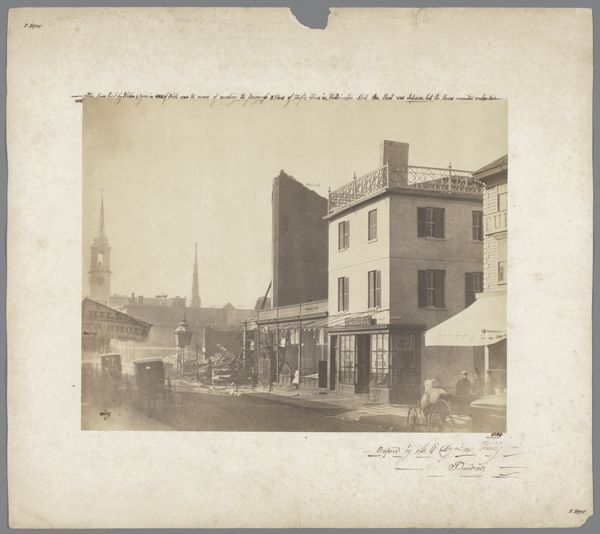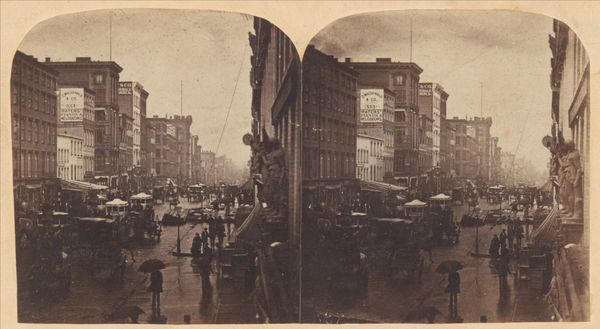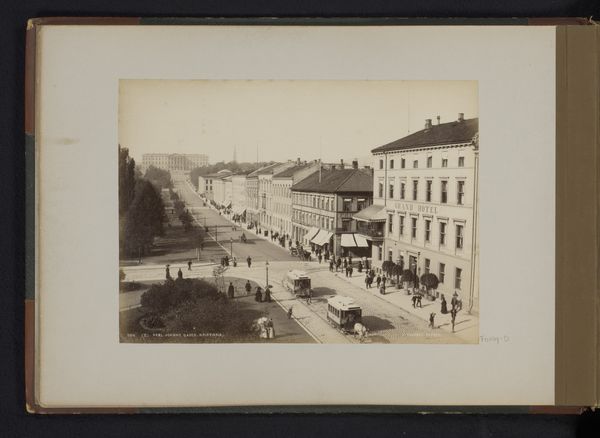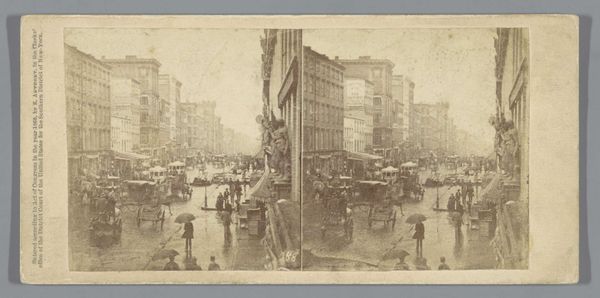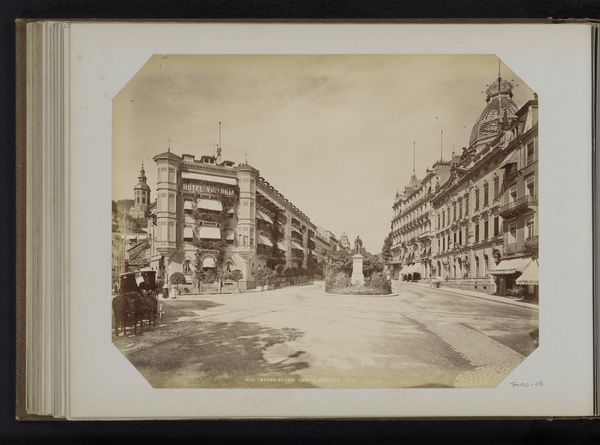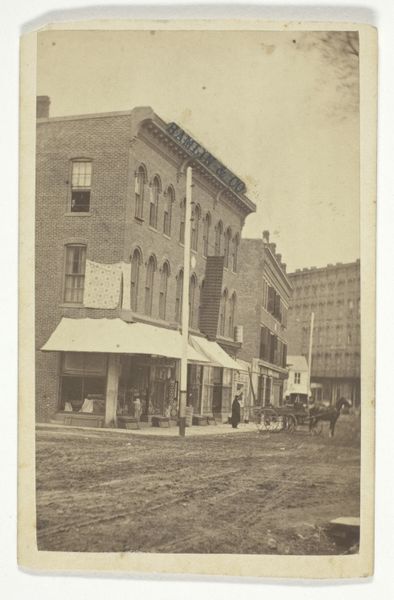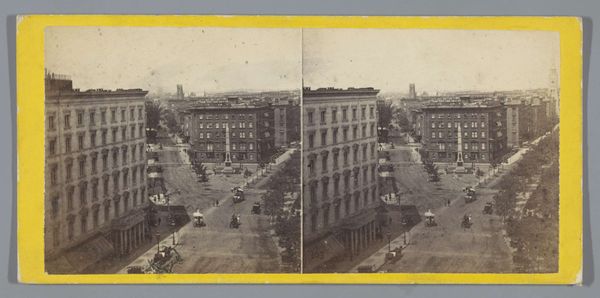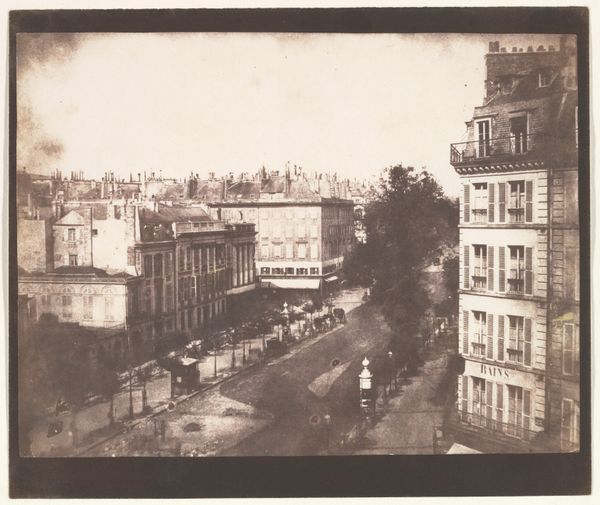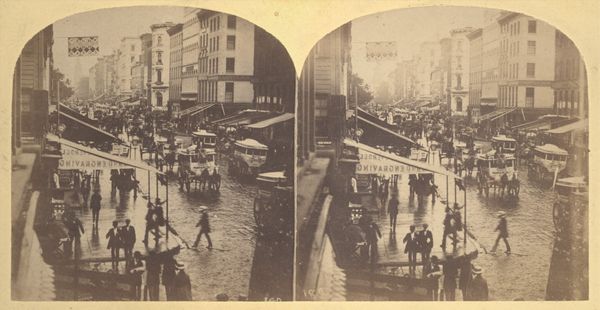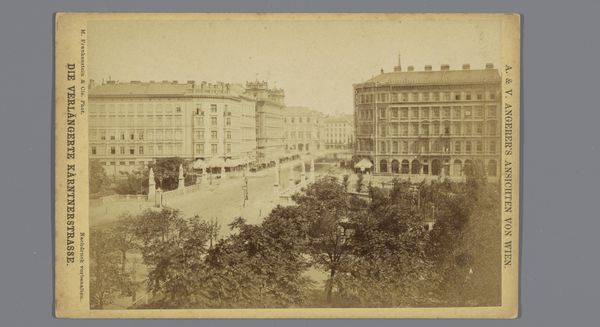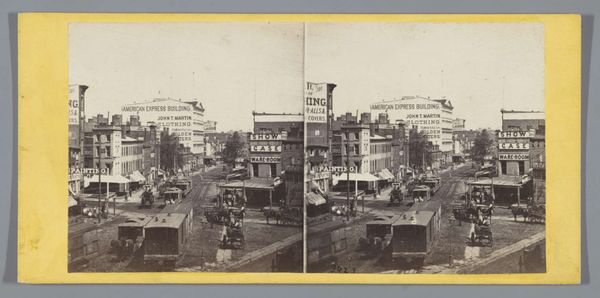
photography, gelatin-silver-print
#
aged paper
#
toned paper
#
paper non-digital material
#
pale palette
#
reduced colour palette
#
photography
#
personal sketchbook
#
gelatin-silver-print
#
cityscape
#
history-painting
#
realism
Dimensions: height 54 mm, width 75 mm, height 63 mm, width 106 mm
Copyright: Rijks Museum: Open Domain
Curator: Immediately, I’m struck by a sense of disorientation. Everything is muted, submerged… it’s both beautiful and unsettling. Editor: I agree, the monochromatic palette amplifies the quiet chaos of this gelatin-silver print, "Overstroming in Buffalo Street, Rochester, 1865,” a photograph by J.B. Roberts & Co. Curator: "Overstroming" – so, flooding. Of course. It makes the dreamy, unreal quality snap into sharp focus. Knowing it's a real event changes everything. Editor: Indeed, seeing Buffalo Street overcome by water draws my focus to its making. These gelatin-silver prints, very popular in the second half of the 19th century, had democratized photography. Cheaper materials, larger editions. How do you think the use of photography as medium here affects our interpretation? Curator: I think the very realness of photography grounds the drama. It’s not a romanticized painting of a flood; it's an attempt to capture a truth, however skewed by the photographer’s own perspective and limitations, of course. Editor: Well, look at the buildings. You can tell the commercial establishments—the bank, merchants—remain prominent, legible despite the flood, reflecting maybe the interests of J.B. Roberts & Co. studio. Curator: That makes me think about the people. Are they wading through this? What were they losing, what were they saving? We're only seeing the shells of their lives. The material stuff. It really brings out the tension between permanence and fleetingness, doesn’t it? This tension sits at the very heart of why we even create and preserve these things! Editor: Perhaps that contrast is amplified for us knowing the effort required for these types of photographs—from developing solutions to using albumen-coated paper and, crucially, the exposure time. Labor becomes intrinsic to how we assess the final output. Curator: It makes you wonder about the future that they imagined, seeing their city like this. Did they know their struggle would become an image, a moment suspended in time for us to contemplate? Did they even know we'd still be seeing it, studying it, caring about it over a century later? Editor: Certainly, a photo is worth thousand gallons of flood water in imagining lost labor and recovered time!
Comments
No comments
Be the first to comment and join the conversation on the ultimate creative platform.

